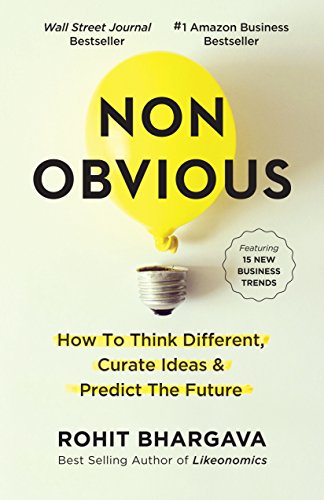Non-Obvious: How to Think Different, Curate Ideas & Predict The Future Link to heading
Summary Link to heading
“Non-Obvious: How to Think Different, Curate Ideas & Predict The Future” by Rohit Bhargava explores the art of trend prediction and idea generation. The book presents a methodology for identifying trends by curating ideas from various sources and recognizing the patterns that emerge over time. Bhargava outlines strategies for cultivating an innovative mindset, highlighting the importance of seeing beyond the obvious and being open to diverse influences. The book focuses on how to think differently, offering a framework for trend curation that combines keen observation with strategic thinking.
Review Link to heading
The book is well-regarded for its practical approach to trend analysis and creativity. Bhargava’s experience in marketing and innovation is evident in the clear, engaging style of his writing. A notable strength is the actionable nature of the insights, as they can be easily implemented across different industries and professions. Some critiques have mentioned that while the book provides a solid framework, its applicability may vary depending on the reader’s field. Additionally, the concepts, while useful, can sometimes feel repetitive over time.
Key Takeaways Link to heading
- Trend Curation Methodology: Learn a systematic approach to identifying trends by collecting ideas from diverse disciplines and synthesizing them.
- Non-Obvious Thinking: Cultivate a mindset that goes beyond conventional thinking to discover unique insights and opportunities.
- Innovation through Diversity: Embrace diverse perspectives and experiences to foster creativity and new ideas.
- Actionable Curiosity: Being curious is not enough; action must be taken to explore and analyze trends.
- Predicting the Future: Use curated ideas and patterns to make informed predictions about future trends.
Recommendation Link to heading
“Non-Obvious” is recommended for professionals in marketing, innovation, and strategic planning who seek to enhance their ability to predict trends and generate novel ideas. Entrepreneurs and business leaders may also find the book useful for developing forward-thinking strategies. Individuals interested in enhancing their creative thinking skills will benefit from Bhargava’s insights into curating and predicting trends.
